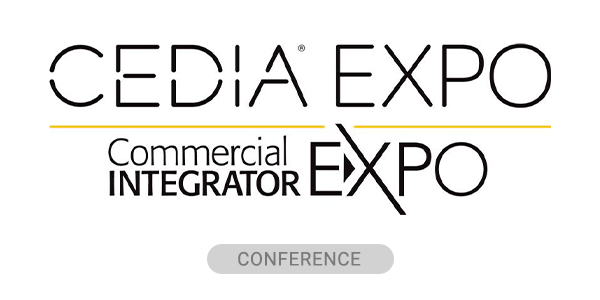In professional AV, change rarely arrives all at once. For decades, our focus revolved around two familiar pillars — audio and video. Integrators designed systems around HDMI, VGA and DisplayPort, carefully routing signals and power through discrete pathways. Then USB-C appeared, and everything changed.
What began as a small, reversible connector for smartphones has evolved into a universal interface that now underpins the way we connect, power and communicate across modern AV environments. Despite popular misconceptions in the public, it is far more than simply a plug. It is a protocol that combines data, video, audio, Ethernet and power delivery through a single, intelligent channel. The result is both revolutionary and, for many, confusing.
Because of the overwhelming popularity and versatility of USB-C, not only now but for the foreseeable future, it is worth doing a deeper dive into some of the reasons this humble innovation has been transforming the industry so powerfully.
From Connector to Ecosystem
The beauty of USB-C lies in its simplicity of design and its complexity of capability. Beneath its compact shell sit 24 pins capable of carrying multiple protocols simultaneously. Through the same port, a laptop can output 4K video, exchange 10 gigabits per second of data, draw up to 240 watts, and connect to Ethernet or peripheral devices.
For users, that convergence means fewer cables and cleaner installations. For integrators, it means re-thinking system design from the ground up. A connector once associated with consumer electronics has become the lingua franca of professional AV.
Yet, as with any language, fluency takes practice. The challenge is not in the connector itself but in understanding what is happening behind it. Two USB-C cables can look identical while behaving entirely differently. One may carry only charging power; another may support video, high-speed data and 100-watt power delivery. The specification does not visually distinguish between them, which leads to widespread confusion in classrooms, meeting rooms, and boardrooms alike.
To take one relatively common use case as an example: a classroom lacking USB-C can very easily fall into turmoil when a well-meaning instructor, student or IT staff member tries to provide a “quick fix” by simply grabbing the nearest spare USB-C cable to rescue a stalled lecture — only to find to their dismay that simply replacing a new USB-C cable can fail to meet the functionality needs (video data and power) because of complexity within the cable’s supported features.
Complexity Inside the Cable
Each USB-C cable contains its own intelligence. The embedded E-Mark chip communicates the cable capabilities such as maximum current (3 A vs 5 A), data bandwidth (USB 2.0/3.2/4/Thunderbolt), and supported alternate modes. If either side fails to agree on parameters, the connection simply never opens.
These smart-handshake protocols protect equipment and ensure safe power delivery, but they also highlight the need for education. Integrators who grew up in the era of “plug-and-play HDMI” now face a multidimensional conversation: which data standard (USB 2.0, 3.2, or 4.0)? Which power profile? What maximum length before attenuation becomes an issue?
Distance is another constraint. By specification, a fully featured USB-C cable is limited to about one meter (3.28 ft) in passive copper form. Extending it to 20 metres (65 ft) is now possible through hybrid copper-and-fiber designs, but this requires sophisticated active circuitry to preserve signal integrity, manage power safely, and prevent overheating. Every additional meter demands engineering precision.
Managing Power and Data Together
Perhaps the most misunderstood aspect of USB-C in AV is its dual role as a power and data medium. Delivering 100 watts or more through a thin cable that also carries high-frequency data introduces unique thermal and electrical challenges. Conductors must be engineered to balance power delivery and high-speed data integrity without thermal or electrical compromise.
At the same time, data rates have accelerated dramatically. Where USB 2.0 moved 480 megabits per second, USB 3.2 can easily deliver more than 20x the bandwidth in its 10-gigabit-per-second mode, with support for up to a blazing 20 Gbps in high performance mode. Such speeds magnify even microscopic imperfections in materials or shielding. A single bit error can interrupt a video feed or drop a device offline. In professional applications, from lecture theatres to command centers, failure is not permissible under even the most demanding circumstances.
That is why professional-grade cables often include active chipsets that continuously monitor, equalize, and retime the signal flow, ensuring that video frames and data packets arrive without loss. These chips effectively turn the humble cable into a managed component of the system.
Download: 2025 Command and Control Report
USB-C Design Implications for Integrators
The shift to USB-C is reshaping integration practice. Traditional AV installations separated power, control and AV signal paths. Now a single connector may serve all three. In practical terms, that means integrators must account for new factors:
- Does the cable need to charge the device or only transmit data?
- Is the video transported as native HDMI over an adapter, or as DisplayPort Alt Mode within the USB protocol?
- Will the system rely on passive or active cables, and what is the distance to be covered?
Every answer influences design, cost and reliability.
A further concern is mechanical. USB-C was never meant for industrial stress. Unlike BNC, VGA or DVI, it lacks a native locking mechanism. In professional AV racks and lecterns, a loose connection can halt a presentation, so this vulnerability becomes a critical point of failure. Many AV manufacturers have addressed it with proprietary retention features or by using reinforced housings, providing the tactile security that installers expect without altering the connector’s form factor.
Bridging the Knowledge Gap
For end users, the experience should be seamless. Plug in a laptop; everything works. Achieving that simplicity demands that integrators understand the underlying complexity.
Today, the AV industry is still on the learning curve. Technicians fluent in HDCP and EDID must now grasp things like power delivery (PD) negotiation and Alt Mode handshakes. Universities, corporate campuses and government facilities increasingly depend on USB-C as the primary interface, and the expectations for uptime are uncompromising.
Training and certification will therefore become as critical for USB-C as they once were for HDMI. The most successful AV professionals will be those who can translate technical nuance into practical reliability.
The Broader Impact: Simplicity, Efficiency & Sustainability
Beyond performance, USB-C also contributes to sustainability and efficiency goals.
A single cable that consolidates power, data, and video reduces material use and simplifies maintenance. Fewer cables mean less copper and plastic, lower shipping volumes and smaller inventories. For large-scale deployments, such as universities with hundreds of rooms, the cumulative environmental and cost benefits are significant.
Moreover, USB-C supports intelligent power management. Devices draw only the wattage they need, and the protocol can dynamically adjust to prevent waste. As organizations pursue greener operations, such built-in efficiency aligns neatly with ESG objectives and future procurement standards.
What Comes Next
If history is a guide, USB-C will certainly define professional AV for years to come (and very likely will do so for the next two decades), serving as a grand unifier in much the same way as HDMI has previously done. USB-C data rates already reach up to 40 Gbps, enabling uncompressed 8K video and beyond. Its power capacity — up to 240 watts under USB Power Delivery 3.1 — can run not just laptops but entire displays. And with adoption spurred by EU regulations and rapidly spreading worldwide, the connector’s ubiquity is assured.
Competing interface concepts will inevitably appear, but none are positioned to displace USB-C in the foreseeable future. Its combination of universality, compactness, and capability simply makes too much sense. The task for AV manufacturers and integrators is not to resist the transition but to master it.
Wired, Wireless or Both?
Of course, as futuristic technologies like AI, robotics, and quantum computing proliferate, it’s worth thinking about the even longer-term evolution of connectivity.
Some wonder whether the ultimate destination is a cable-free world. Wireless presentation systems, and new Wi-Fi standards have already reduced reliance on physical links. But while wireless will continue to expand, especially for collaboration and BYOD scenarios, mission-critical AV will remain wired for now. Reliability, bandwidth, and security still favor copper and fiber when absolute performance is required.
In that context, USB-C serves as both bridge and anchor: a connector built for the present but adaptable to the future. As wireless power and data evolve, USB-C’s underlying standards will likely inform them, ensuring continuity rather than obsolescence.
A Decade (or Two) Ahead
In every generation, one interface defines the era. For the foreseeable future, that interface is USB-C. It simplifies complexity, enables design elegance and empowers users to connect without a second thought.
For integrators and manufacturers, it demands rigorous thinking, precise engineering and a deep respect for what is happening inside that small metal shell.
USB-C is not just another cable. It is the backbone of a new, unified AV ecosystem — one that will shape how we connect, communicate and collaborate for decades to come.
Yishai Mescheloff is VP of Product Management at Kramer. With more than 20 years of experience in the professional AV industry, he works at the intersection of technology, product, and customer by translating complex challenges into simple, accessible solutions. Passionate about innovation and long-term partnerships, Yishai combines technical expertise with a strong business mindset, helping shape products that meet real-world needs. He frequently engages with clients and industry partners worldwide, sharing insights and showcasing next-generation AV technologies.




